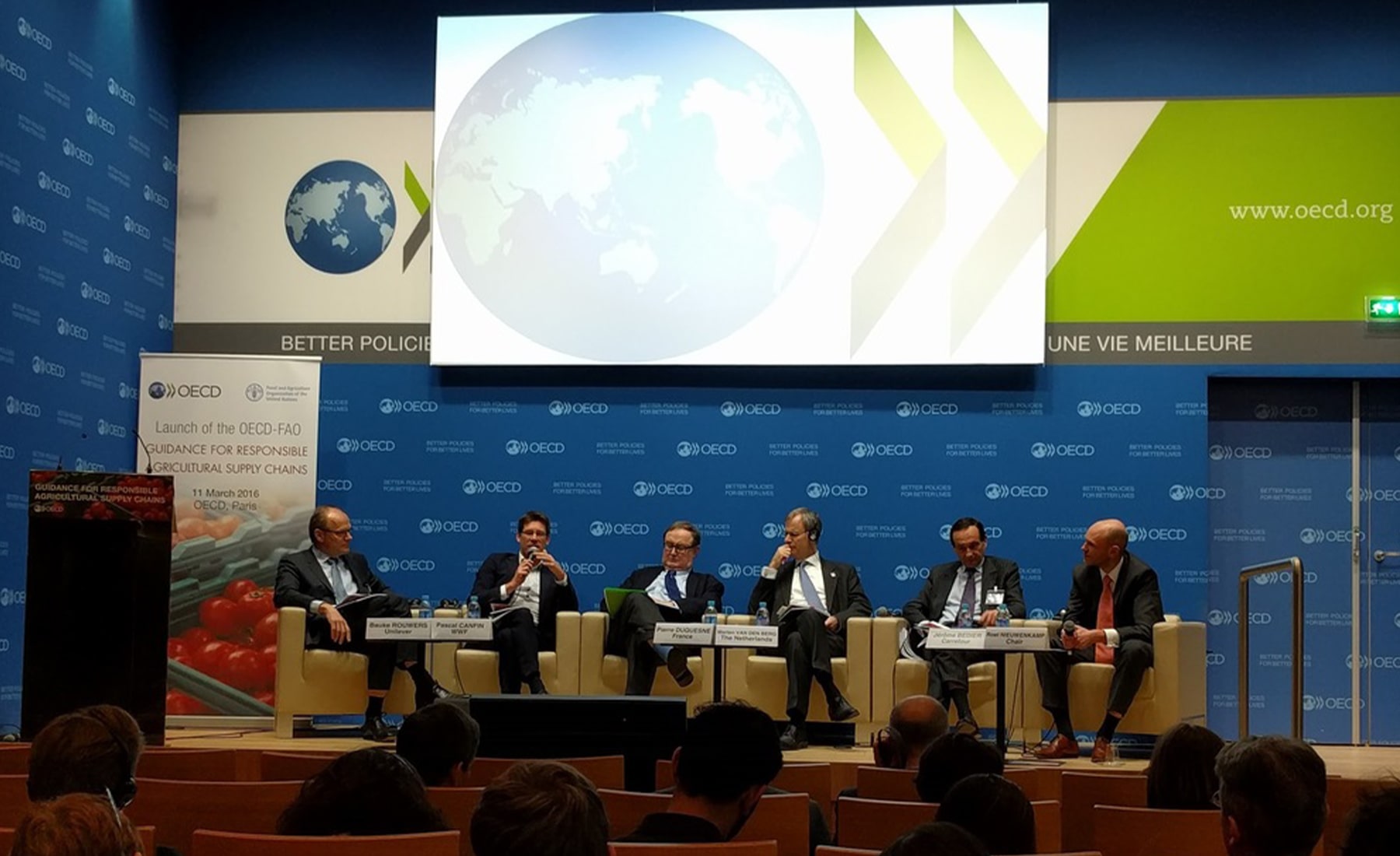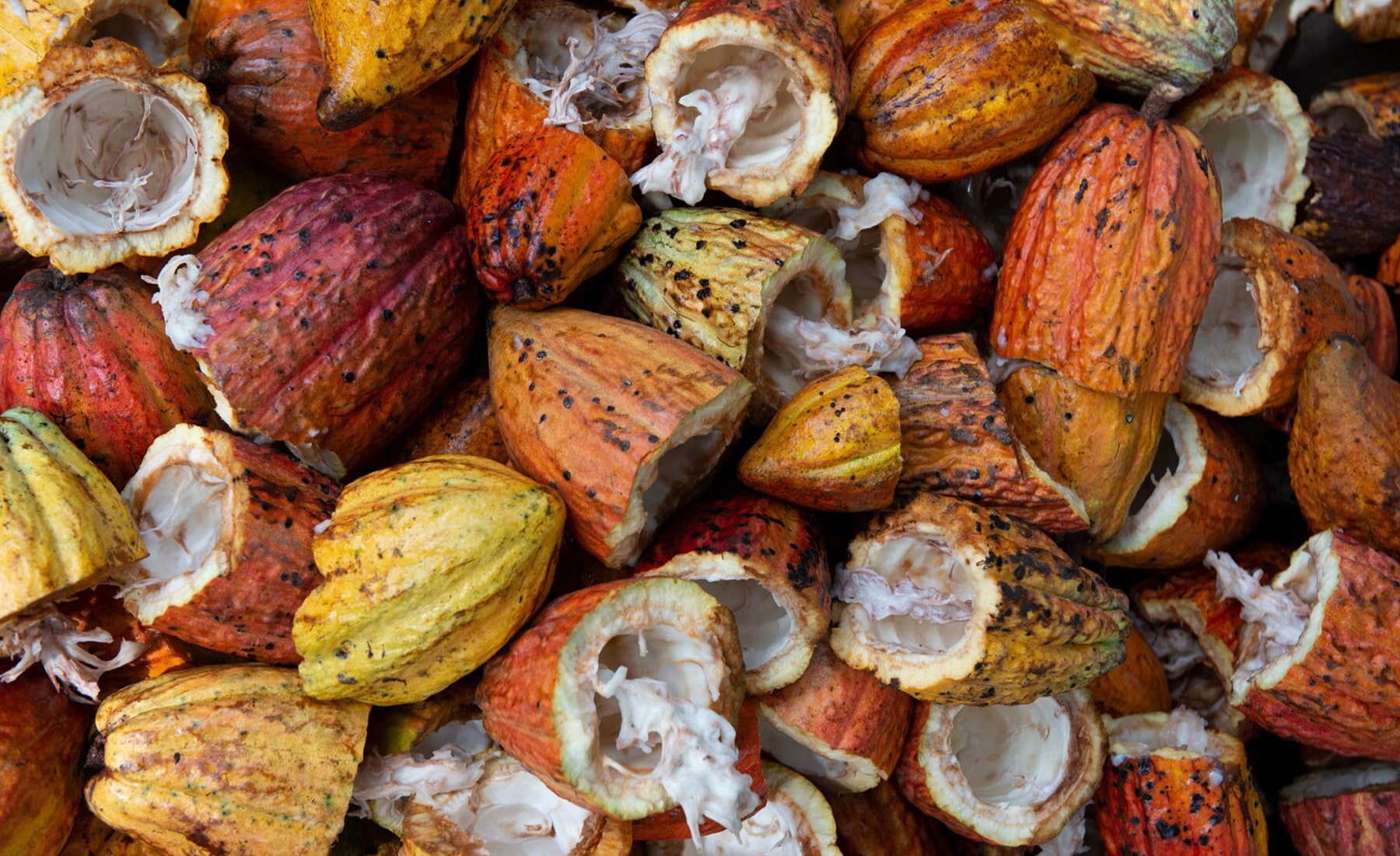
OECD-FAO Guidance for Responsible Agricultural Supply Chains
On Friday 11 March a new global reference standard for agricultural commodities was formally launched. The culmination of a two-year development process involving industry, governments and civil society, the new OECD-FAO Guidance for Responsible Agricultural Supply Chains provides a due diligence and risk management framework to help companies respond to the risks of significant social or environmental impacts in the agricultural supply chains.
Certainly, serious social or environmental impacts are a very real risk in many agricultural supply chains – and not just those in developing countries. As one of the speakers at the launch event in Paris pointed out, serious human rights abuses have been found in agricultural operations in European countries such as France.
However, as a sector, agriculture already has a proliferation of standards and certification programmes for responding to social or environmental risks. So where does the OECD-FAO Guidance fit in?
Importance of the OECD-FAO Guidance to responsible agricultural supply chains
There are two areas in which the OECD-FAO Guidance stands out from other standards and certification programmes:
- Firstly, there is its development process, which was led by organisations with no vested interests (the OECD working with the United Nations Food and Agriculture Organisation) and involved extensive consultation with diverse stakeholders and thorough (some might say tortuous!) negotiation over the text. The result is that the Guidance can legitimately be claimed to represent the consensus view on good practice in responsibly sourcing agricultural commodities.
- Secondly, is its relevance to and credibility with governments. Whilst the Guidance is not in itself a legal instrument, the Guidance has been developed under the thematic of the OECD Guidelines for Multinational Enterprises, to which the governments of 34 OECD countries and 12 non-OECD countries are signatories. The OECD-FAO Guidance is very heavily based upon the OECD’s Guidance for Responsible Mineral Supply Chains, which has become enshrined in US law and may soon also be enshrined in EU law.
Five-step risk-based due diligence framework for agricultural supply chains
The Guidance sets out a five-step risk-based due diligence framework for agricultural supply chains, which is closely modelled on the tried-and-tested due diligence framework developed by the OECD for mineral supply chains. The five steps of the framework are:
- Establish strong management systems for due diligence: This includes recommendations for adopting a supply chain policy, strengthening internal governance and implementing management processes and controls to identify and manage social and environmental risks.
- Identify, assess and prioritise risks in the supply chain: This provides recommendations to help companies understand the factual circumstances of their supply chain(s) and identify ‘red flags’ – i.e. where the risk of significant social or environmental impacts warrants additional due diligence.
- Design and implement a strategy to respond to identified risks in the supply chain: Recommendations are provided on the due diligence measures that companies should use to respond to ‘red flagged’ risks identified in their supply chain(s).
- Verify supply chain due diligence: The Guidance recommends that supply chain due diligence is verified, preferably by independent external auditors.
- Report on supply chain due diligence: The Guidance recommends that companies disclose the results of their supply chain due diligence to relevant external stakeholders.
Alongside the five-step due diligence framework, the Guidance provides a model supply chain policy that sets out the major standards that companies should observe in order to build responsible agricultural supply chains. Further details on specific risks and mitigation measures are provided in the annexes.
Certification is not enough to respond to agricultural supply chain risks
For some companies that have been working on responsible sourcing practices for some time, many, if not all, elements of the Guidance may already be addressed by existing policies, processes and activities. For others, the recommendations of the Guidance may be substantially more demanding than current practices.
It is worth noting that the Guidance is clear that due diligence responsibilities cannot be outsourced. Those companies that are solely relying on certification schemes as their response to potential risks in their agricultural supply chain will find themselves coming up short against the standards of the Guidance.
If your business has agricultural commodity supply chains, it would be worthwhile benchmarking your existing supply chain risk management systems, processes and activities against the recommendations of the Guidance to see how your business processes compare against this standard.
At Kumi we have substantial experience with the practical application of OECD due diligence guidelines in company supply chains. Drawing on this experience, we are currently working directly with the OECD to evaluate the practical application of the OECD’s due diligence recommendations in mineral supply chains. If you would like to discuss what the OECD-FAO Guidance may mean for your business, please do not hesitate to contact us.

